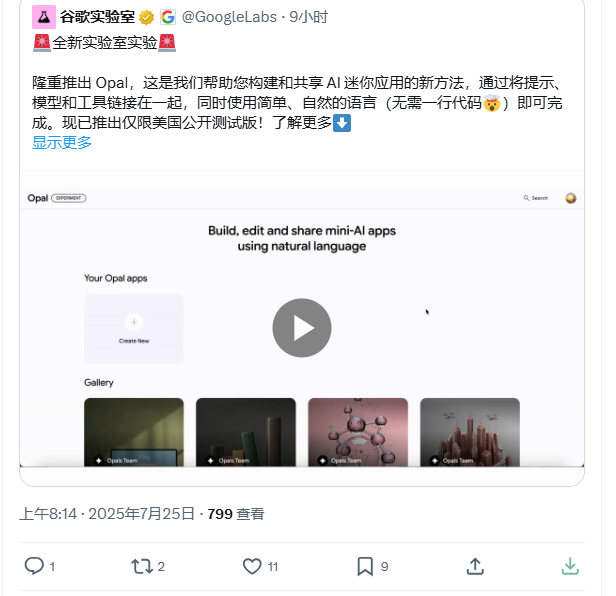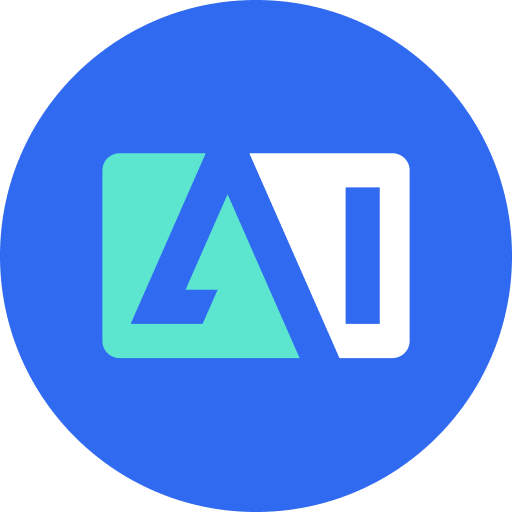Google Labs officially announced the launch of its latest experimental project - Opal, a revolutionary no-code AI application development tool. This tool centers on natural language, allowing users to quickly create and share AI-powered "mini-apps" through simple text descriptions without writing a single line of code.

Core Features of Opal: From Natural Language to Visual Workflows
The core highlight of Opal lies in combining natural language processing with visual editing. Users simply need to describe their application requirements through text, images, or videos, and Opal will automatically generate the corresponding AI workflow and use Google's Gemini model to complete the task. The generated workflow is presented in a visual interface, allowing users to easily view and modify each step's prompt and instructions, greatly lowering the barrier to AI application development.
For example, users can quickly generate an image processing application by describing "convert a photo into a Minecraft style." Opal not only supports simple creative tasks but also handles complex multi-step workflows, suitable for digital art, content creation, data processing, and other scenarios. This flexibility makes it an ideal tool for both individual creators and professional developers.
Innovative Attempts in No-Code Development
The release of Opal is seen as Google's response to the no-code development trend. Compared to tools like Microsoft's Power Platform and Copilot Studio, Opal clearly focuses on lightweight, rapidly iterative AI application development through its "mini-app" positioning. Feedback on social media indicates that users appreciate Opal's intuitive interface and fast generation capabilities, considering it similar to tools like ComfyUI in creative workflows but easier to use.
Currently, Opal is in a limited public beta in the United States, and Google Labs stated that it will continue to optimize features based on user feedback. In the future, Opal is expected to expand to more regions and support broader AI model and tool integrations.
Empowering Diverse Application Scenarios
Opal's goal is not only for technical developers but also for users without a technical background. Whether generating personalized images, writing automated scripts, or creating interactive AI chat tools, Opal can quickly realize them through its powerful AI backend. Some users have already shared case studies of Opal's applications in rapid prototyping and creative experiments on social media, showing its potential in education, marketing, and entertainment fields.
In addition, Opal's cloud support allows users to share the generated applications with others, further promoting collaboration and innovation. Google Labs emphasized that Opal aims to "make AI technology accessible," providing users with an open platform to explore the possibilities of artificial intelligence.
